The culture of Ancient and Medieval India is one of the most interesting topics for those who want to learn something really unusual and exotic. The fact is that the traditions of this country are so different from everything that can be seen in the world that at first you can’t even believe that all this happened on our planet. However, then, when the realization comes that these people lived and continue to live with us on the same Earth, the question arises: “How much do we know about humanity?”
Let's try to figure out what the culture of ancient India was. Briefly, but as detailed as possible, we will try to cover this topic.
Country history
The culture of ancient India is divided into two stages: Harappan and Indo-Aryan.
About the first of these, our knowledge today is very scarce. So, scientists can only argue that the first civilization, located on the territory of the Hindustan peninsula and Pakistan, was incredibly developed for its time. Local residents had running water, carefully planned cities and had a written language. And all this for 2000 years BC!
Unfortunately, these ancient predecessors of the Hindus did not leave us any full-fledged literary sources. We have an idea of the art of the Harappans only thanks to miniature sculptures, which are made with incredible detail and accuracy. Unfortunately, there aren't many of them left. Today, finding such a sculpture for an archaeologist means a huge success. The Harappan civilization itself disappeared without a trace for reasons unknown to us.
Most likely, it was destroyed due to the rapidly changing climate at that time. Also, the disappearance of the Harappos could have been caused by the actions of bloodthirsty tribes of nomads, united by the common name "Aryans". By the way, very quickly they settled on the Hindustan peninsula and began to set a new cultural tone on it.
Everything that we know about the Aryans has come down to our days in the form of the Vedas written by them. It is one of the oldest literary sources in the world. And although the history of ancient India in it takes on a more religious tone, this book remains for us the only opportunity to look into the past.
In those days, a single state of India did not exist. For the first time, all the city-kingdoms that were on the territory of the peninsula in the first millennium BC. e., united to fight Alexander the Great. By the way, it was thanks to the repulsion of the attack of this powerful army that the culture of Ancient India remained so distinctive. After all, she was never given the “injection” of antiquity, which the Persian peoples received in full.
Later, the peninsula was repeatedly divided by various invaders and narcissistic kings. It was the unwillingness of the Indians to become one superpower that became the main weakness during the expansion of the British Empire.
Fortunately, thanks to the efforts of Gandhi and his supporters, we now have one whole Indian state on the map.
caste system
Life in ancient India was a real test of humility of spirit. The fact is that those very Aryan "Vedas" created a unique rule for the social distribution of goods and rights within a culture. This system was called caste. In total, there are four groups in this division - as the Hindus call them, Varnas.
The first and most revered group are the priests. For the Hindu, they were not only a connection with the gods, but also healers, the wisest men, whose opinion was worth listening to.
Warriors became the second most important (only the professional numerous class, and not the militia).
The third group included ordinary people - a variety of artisans, merchants and peasants. All of them were free and could manage their fate as they pleased (within their varna, of course). It was the most numerous, the main caste.

The fourth group included slaves and prisoners of war that were in every ancient state. They, of course, were not really considered people - they were lower beings, forever doomed to work and suffering.
Over time, the caste system developed and acquired new subspecies, but they all appeared within one of the four varnas. The peculiarities of the culture of Ancient India appeared thanks to the philosophy that explained such a division: it was believed that every person born on earth has his own role and has no right to change it, since the gods have prepared for him a similar fate. It was not easy to move from Varna to Varna, especially when it comes to climbing up the social ladder. Although even a fall was not always to be feared: a rare ruler, after conquering the lands, changed people, making the priests slaves. This was seen as a challenge to the gods and an attempt to destroy the fragile world order that was maintained by a clearly laid-off system.
Hinduism
The religion and culture of ancient India are intertwined with each other in such a way that it is virtually impossible to consider them separately. After all, the whole way of life and culture of the inhabitants of the peninsula rests on faith.
The most common religion in India is Hinduism. The foundations of this faith were laid down in the Vedas, and it was thanks to her that the caste system was established. Its necessity was explained by the constant action of the "wheel of rebirth of souls", or "samsara". It was believed that what varna a person will fall into at the next birth depends on the karma that he acquired during his life - good or bad.
It is noteworthy that in the Western tradition, the theory of karma is interpreted incorrectly from the point of view of Hinduism, because it works exclusively in the caste system, and is not based on the concept of "good" and "evil". The fact that for a slave virtue (for example, submission) will become a plus for him during rebirth, can be an absolute minus for the king. That is, karma depends, first of all, on how conscientiously a person fulfilled his role in society.
No culture of ancient civilizations has so many paradoxes. India, along with its religion, confidently ranks first on this list, because its religion contains both monotheism, polytheism and totemism. It sounds wild for a European person. But the followers of Hinduism calmly explain this: there is one, the supreme god Vishnu, he is omniscient and omnipotent. He is outside of samsara, and enters it in various forms, which are the rest of the gods, or, as they are called, avatars. But this is not all, because specifically on earth, in our material human world, the Supreme God descends through his avatars in the form of animals: monkeys, cows, cobras.
That is, whoever the adept of religion worships, he in any case serves Vishnu. This explains why the cultural history of Ancient India has almost no religious conflicts. The same Buddha, which will be discussed further, was perceived in Hinduism as another avatar of Vishnu.
Buddhism
The history of Ancient India also tells us about the emergence of one of the three world religions - Buddhism. In fact, the origins of this faith must also be sought in Hinduism, since the main idea of the “wheel of rebirth” came from there.
Another question is how the Buddhists presented it in their faith. In the first millennium BC. e. In India, a new idea arose to seek salvation from the cycle of endless rebirths and dependence on karma. Ascetics and hermits began to appear in the country in gigantic numbers, seeking the truth in all possible ways.
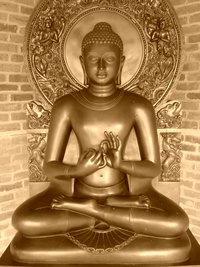
Among them, Siddhartha Gautama stood out - the prince of a small Indian state, who, having lived most of his life in luxury, fled the palace to clarify the nature of human suffering. After 7 years of wandering, the details of which we know from legends, he found enlightenment.
Along with its discovery, the culture of ancient India also changed. Briefly retelling the view of the world through the prism of Buddhism can be as follows: a person, by definition, is doomed to suffer while in the endless wheel of samsara. However, salvation is possible. It is called "nirvana" and is a state of peace of the human soul, the rejection of all passions. It is in the gradual renunciation of emotions and desires that lies the secret of salvation. When a person reaches the state of nirvana, he becomes enlightened, that is, a Buddha. Anyone can be one, and for this it is not necessary to be born some kind of superman or king. This religion assures us that everyone can be saved, regardless of the caste system, you just need to want and make an effort.
Buddhism also teaches a person the philosophy of the “middle way”: nothing should be taken to extremes, it is always worth looking for something in the center. As a rule, this is how the true answer to the question is found. In general, to call all this "religion" in the traditional sense of the word is very difficult. Rather, it is a philosophical trend that has its own monasteries and a strong tradition.
Buddhism is absolutely not concerned with the nature of the question of a higher being - it simply does not exist in this religion. But if a person wants to believe in the Almighty, the doors to the Buddhist temple are still open for him: Buddha's philosophy does not officially accept or reject the presence of God in the world, leaving this to everyone's personal consideration.
scientific knowledge
It should be noted that Ancient India is characterized not only by its original culture, but also by advanced science. So, this country has been famous for its mathematics and astronomy for centuries.
Local astrologers as early as the beginning of the 1st century A.D. e. They argued that the Earth is a sphere that rotates both around its own axis and around the Sun. And the very numbers that we usually call Arabic numbers actually came to us through Persia from India, where they were invented. In addition, the scientists of this country were the first to introduce the concept of zero, absolute emptiness, into mathematics. Before them, no one thought of this - because why count what is not.
In their science, the Hindus primarily developed absolutely practical knowledge related to calendar timekeeping, surgical operations and the creation of medicines. However, they never delved further than necessary, for example, into the same anatomy. And all from the fact that every Hindu set himself the goal of knowing the world through philosophy, which was assigned to a separate category.
Unlike the same China, the state of Ancient India had almost no famous inventors. Science here was very different from what is meant by this term in the rest of the world. First of all, science among the ancient Hindus was the knowledge of the nature and soul of man, and not, for example, physics and arithmetic. The same zero appeared exclusively in the context of the search for peace of mind.
Literature
The artistic culture of Ancient India in terms of literature is based primarily on various sacred texts.
The first of these, and the most important, is the already mentioned Vedas. The plot tells about the struggle of the Aryans for survival on the territory of the peninsula. The Vedas are divided into four equal parts: sacrificial formulas, magic spells, songs and religious hymns. This book is the oldest literary source in India, but it appeared in written form much later. At least the representatives of the priestly varna knew the texts by heart much earlier than they appeared on paper.
Also, the art of the pen in the ancient state was represented by various epic works, the most famous of which are the Mahabharata and Ramayana, poems about the journey of two avatars of Vishnu. However, most of the text in these works is far from the main storylines and is a retelling of myths and legends, as well as various ancient Indian parables.
In general, the literature of this state in ancient times was mainly built exclusively on the form of parables or fables. Thanks to this, she combined moral morality and a certain religious meaning.
In addition, Indian literature was rich in various treatises of a religious nature, although the word "religion" in our understanding is not applicable to the religions of the ancient inhabitants of the peninsula. These works dealt with and analyzed the foundations of the Buddhist and Hindu worldview.
Visual arts and architecture
The artistic culture of ancient India is inextricably linked with architecture and fine arts. And the point here, first of all, is the impossibility for us to find out exactly how the most ancient peoples of the peninsula lived. Their paintings, sculptures and buildings were mostly made on a wooden base, and therefore simply did not survive the test of time for several millennia.
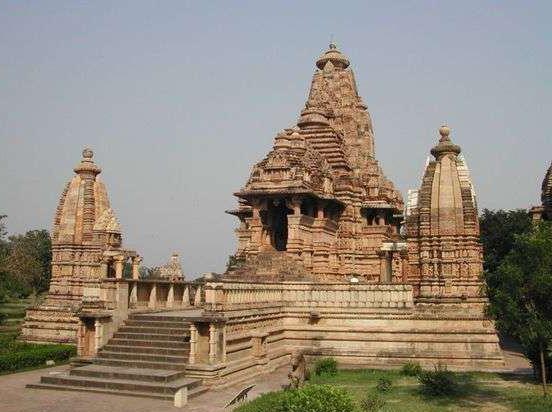
For our view, Indian architecture is revealed only from the 1st millennium AD. BC, when Buddhists began to use stone to create stupas. These are sacred objects in which, according to legend, the material parts of the Buddha are stored - for example, his hair. There are quite a lot of similar structures throughout India, and they form our main impression of Indian architecture. For local residents, they are the same as for the Orthodox - a temple.
The tradition of sculpture has also come down to us, starting from that time, excluding those small sculptures of the Harappan era, which were mentioned earlier. In fact, the whole world knows giant Buddha statues near temples and images of the prophet carved into the rocks. In addition, the statuettes of various incarnations of Vishnu, which they place in their homes and altars, are highly respected among the Hindus. However, the descendants of the Aryans do not have a clear concept of sculpture as an art devoid of a religious orientation.
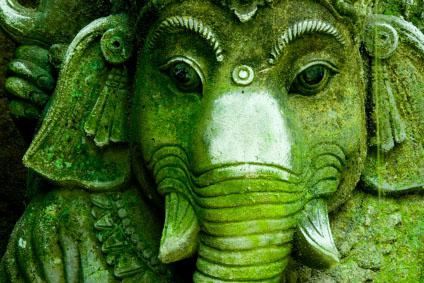
The fine art of ancient India has come down to us thanks to the cave-monasteries. Local residents never used canvas and paper for painting, choosing stone walls for this. Therefore, going to the gallery of ancient Indian drawings will not work, and in order to see the works of artists, you will have to travel all over the country. And, again, the plot-everyday theme in this type of creativity was almost not reflected: it was based on parable stories from Buddhist and Hindu mythology.
Theatre
The independent achievements of the culture of Ancient India in matters of theater are much smaller than, for example, Japanese performances. This is mainly due to the fact that the representations of local residents have not gone away from the primitive acting out of scenes of the relationship of gods and myths. As a result, they never had the serious and multi-layered dramaturgy for which the European tradition is famous.
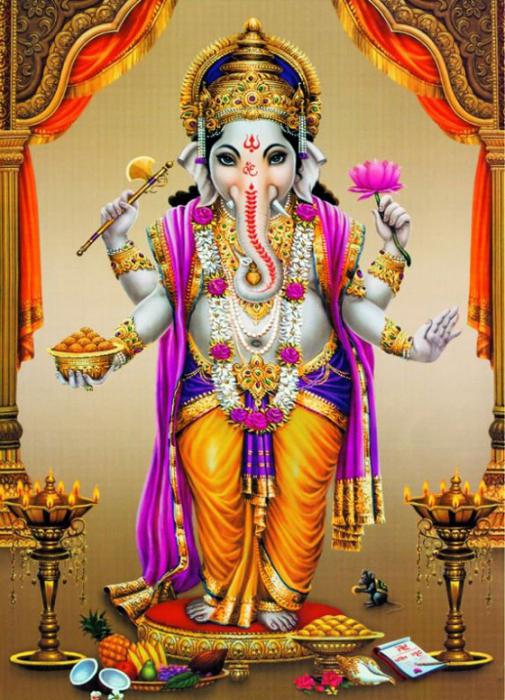
The basis of the Indian performance is the spectacle, music and choreography. Many performances are absolutely plastic and have no text. The main thing for the theater in Indian culture is entertainment and instructive (from the point of view of their philosophy) morality.
A vivid example of this type of performance is the well-known shadow theater, which made it possible to show all the mystical nature of the gods without the manifestation of special decorative delights. In fact, this is the Indian version of representations - the minimum number of expressive means that are created solely to convey one thought and convey philosophy.
Indian music originated in the same context as theater and is inextricably linked to it. It is difficult to say whether there is some kind of independent direction - basically, all these ethnic tunes and melodies were just an addition to performances and were not perceived by Hindus as a separate art.
Influence of Indian culture
For many centuries, India itself "boiled" in the cauldron of its culture and was supplemented only by the influence of the peoples who lived in the neighborhood. However, in the 20th century, Europeans discovered the originality of the customs of this country.
Now a huge number of Western people are involved in the study of the subject of "the culture of ancient India." They use its philosophical and esoteric achievements, are fond of Buddhism and its various branches.
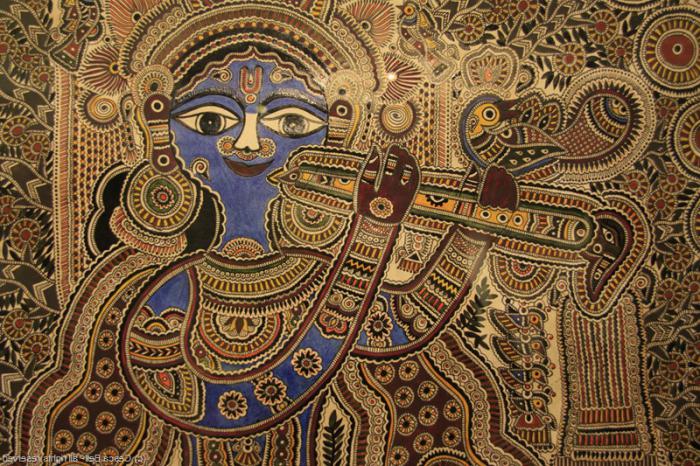
The system of providing your body and spirit with the right loads, called yoga, has now gone far beyond the halo of hermits. Now this practice has become a world heritage. Yoga schools are open in almost every civilized country in the world.
Also, many people whose spirit is concerned with the search for truth find solace due to the religious achievements of the culture of India. The same "Vedas", as the oldest religious text in the world, becomes a real discovery for many, because it seems that through it one can see the true essence of the divine principle.
It is clear that the culture of India has changed a lot, and not all Western peoples understand it correctly. The same karma, as already mentioned, in its original world simply in theory cannot exist until the caste system of society is used.
Conclusion
Many today are interested in the history and culture of the Ancient East. India occupies a special place in this topic. In the culture of this country, there are many traditions and practices that may be misunderstood by us. However, it is necessary to know that all this did not arise from a good life: a paradoxical lump called “the culture and art of Ancient India” was dictated to the Indians by their very life and the need to somehow explain the complexities of existence.
Now Indian culture is rapidly modernizing, changing to a Western style. The caste system in the civilized big cities has disappeared. However, it still remains unique and necessary for the study of those people who wish to expand their horizons. It is especially recommended to study it for those who are trying to find at least some point of support and tranquility in the world, and the methods proposed by the Western tradition do not help.
